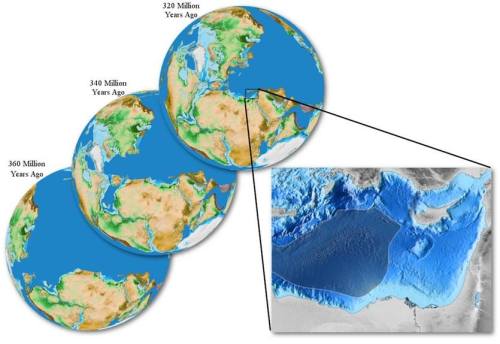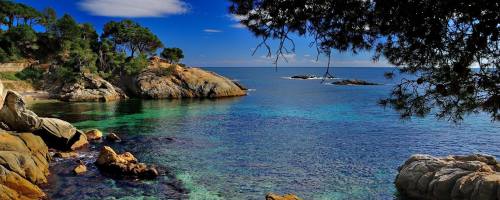The world’s oldest chunk of oceanic crust, hiding in plain sight in the Mediterranean?The Midd
The world’s oldest chunk of oceanic crust, hiding in plain sight in the Mediterranean?The Middle Sea is the last remnant of a long lived ocean called Tethys that formed an embayment in the supercontinent Pangea before widening as volcanic rifts began to tear it apart and create the present day oceans surrounding the modern dispersed continents. Sea crust is very different to land crust, much thinner and denser and it forms at spreading centre where rifting is creating space for molten basalt to rise into the gaps and create new crust. At the other end of the cycle the crust moves away, cools and sinks (creating the deep basins) and eventually subducts somewhere back into the mantle. As a result most oceanic crust is young, with the current oldest dating from some 200 million years ago.As it erupted and froze under the water, crystals of magnetic minerals such as the iron oxide magnetite aligned themselves with the prevailing magnetic field, which has a clear direction. During the history of our planet the direction of the magnetic poles has reversed many times (for largely unknown reasons, but thought to be due to the sloshing of liquid iron in the outer core), recording these reversals as stripes of opposite alignment in the oceanic crust, which essentially acts as a slowly unrolling and vanishing magnetic tape. This tape was the key that brought about the plate tectonic revolution of the 1960’s. Lavas on land do this as well, so the record of reversals has been elucidated further into the past than any extant oceanic tapes, with occasional gaps in the record.The boundaries between continents and ocean are messy, no resemblance to the neat lines in geology textbook diagrams, and the Med is no exception, recording the slow grind westwards of the Anatolian Plate and northwards of the African, with the Alps as living testament to the immense forces involved. A team working with magnetic data and the ‘underground strata maps’ discernible in seismic reflections to reveal a patch of crust that they think is 340 million years old (the next youngest off Japan weighs in at 190 million, though older chunks have been pushed onto the continents as ophiolites during mountain building events), back in the middle Carboniferous as Pangaea was just finishing its assembly.Sited between Turkey and Egypt, the stripes showed a previously unknown spreading centre, running from north to south, though it was once part of southern Tethys, where the African plate edge sits under the sea in a complex region known as the Herodotus basin. The feature is buried under 10km of recent sediments, shed off the growing mountains in the lands around the sea as the continents collide. The dating was done by comparing the magnetic signals with the known movements of the plates during the past 400 million years and the record in land lavas, with the closest match being the Carboniferous.Exploring this piece of crust should reveal some interesting information about the early days of Pangaea, and some even speculate that the chunk of crust could even be a bit older than the supercontinent, giving us a new glimpse into a a part of the geological record in a very different world to today’s. It suggests that the supercontinent may have started breaking up earlier than thought, and that this piece of crust may be a record of it, or that it might even predate the final assembly of the supercontinent.LozImage credit: graphic: Roi Granot, Photo superwallpapershttp://bit.ly/2bhDrq6http://bit.ly/2bhCu14http://bit.ly/2bhDZfPOriginal paper, paywall access: http://go.nature.com/2bQ6Raq -- source link
Tumblr Blog : the-earth-story.com
#science#geology#subduction#geophysics#mediterranean#turkey#magnetic#paleomagnetism#herodotus#africa#eurasia

